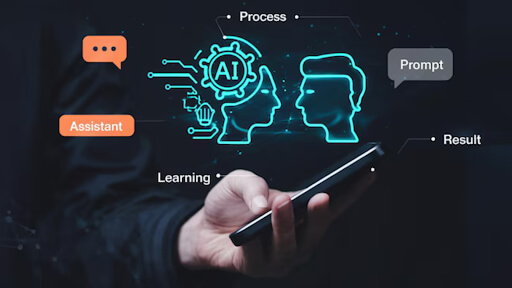 1-800-805-5783
1-800-805-5783 
Artificial intelligence is evolving — not just in capability but in independence. While we’re used to AI models that react to prompts, Agentic AI is here to change the game by doing something most AI hasn’t done before: take initiative.
From intelligent assistants that follow orders to AI agents that create and execute their strategies, we’re witnessing a leap in how machines interact with the world. That leap is called Agentic AI.
This blog unpacks Agentic AI, how it works, and why it’s at the center of the next wave of automation. We’ll also explore real-world use cases, challenges, and what’s next.

Agentic AI refers to AI systems that demonstrate autonomy, goal-directed behavior, and contextual reasoning. In simpler terms, it’s AI that doesn’t wait for you to tell it what to do — it figures out what needs to be done, and does it.
While traditional AI follows commands (“write an email,” “summarize this article”), agentic systems can set their objectives. They assess a situation, determine the best approach, and take action — all without constant human input.
Think of an agentic AI as a skilled assistant who understands your business, proactively manages projects, coordinates with vendors, flags risks, and suggests improvements without needing a nudge every step.
Agentic AI systems typically have:

The shift from static AI models to agentic systems is like upgrading from GPS navigation to a self-driving car. It’s not just helpful — it’s transformational.
Here’s why businesses, researchers, and developers are paying close attention:
AI chatbots used to rely on decision trees. Now, agentic AI systems like GPT-4-powered agents can:
This reduces resolution times by up to 30%, according to Zendesk’s 2024 CX Trends Report.
Agentic AI can analyze a patient’s history, recommend tests, review results, and flag abnormalities. IBM’s Watson Health has shown that AI-assisted diagnosis can improve accuracy by up to 20% in oncology departments.
Developer-focused tools like Devin (by Cognition Labs) are agentic AI engineers. They write, test, debug, and deploy code with minimal supervision. These agents have been benchmarked to complete complex dev tasks at 80% the speed of a junior engineer — and they’re improving fast.
AutoGPT, BabyAGI, and Microsoft’s Copilot agents are early consumer-grade examples. These tools book appointments, summarize long documents, generate reports, and make purchase decisions based on predefined goals.

The rise of Agentic AI is not a vague future — it’s already underway:
McKinsey estimates that, due to automation gains, businesses adopting agentic systems could cut operational costs by 15–25% within 3 years.
Most agentic systems consist of three major components:
Let’s say you tell an AI agent: “Plan my product launch campaign.”
A traditional AI might generate a checklist.
An agentic AI will:
All will be done with minimal input after the initial goal is defined.
Like any powerful tool, Agentic AI comes with risks.
AI agents can confidently make decisions based on flawed data. Without human-in-the-loop checks, this could lead to costly errors, like publishing incorrect reports or misinterpreting legal documents.
Because agentic AIs can take actions (e.g., browsing the web and sending emails), they are more susceptible to abuse or unintended consequences. If compromised, they can act as high-level access points.
Who’s responsible when an AI agent acts wrongly? The company? The developer? The user? These are legal gray zones being hotly debated in AI governance circles.
As agents become more capable, there’s a temptation to delegate too much. But like any assistant, they need boundaries, oversight, and periodic audits.
We’re just getting started.
Experts believe agentic AI will evolve into multi-agent ecosystems — networks of AIs collaborating across departments, apps, and even companies.
By 2030, it’s predicted that:
This isn’t science fiction. Tools like MetaGPT and CrewAI already allow teams of agents (e.g., a coder, a manager, a tester) to coordinate tasks with minimal human instruction.

Agentic AI is more than a buzzword — it’s the next chapter in how we work, create, and problem-solve.
With the ability to self-direct, plan, and adapt, these AI systems go beyond automation. They introduce the possibility of collaboration between humans and machines, not just as tools, but as co-workers with initiative.
For businesses, the message is clear: don’t just adopt AI—adopt agents. In a future driven by initiative, waiting to be told what to do might mean getting left behind.
1. What is agentic AI?
Agentic AI refers to AI systems that can set goals, make decisions, and act autonomously without constant human input.
2. How is agentic AI different from traditional AI?
Unlike traditional AI, which reacts to specific prompts, agentic AI can plan, adapt, and take initiative based on its environment.
3. What are some real-world uses of agentic AI?
Examples include autonomous financial advisors, AI coding assistants, virtual healthcare agents, and customer support bots.
4. What are the key benefits of agentic AI?
Agentic AI increases efficiency, reduces the need for manual oversight, and enables intelligent automation across complex workflows.
At [x]cube LABS, we craft intelligent AI agents that seamlessly integrate with your systems, enhancing efficiency and innovation:
Integrate our Agentic AI solutions to automate tasks, derive actionable insights, and deliver superior customer experiences effortlessly within your existing workflows.
For more information and to schedule a FREE demo, check out all our ready-to-deploy agents here.